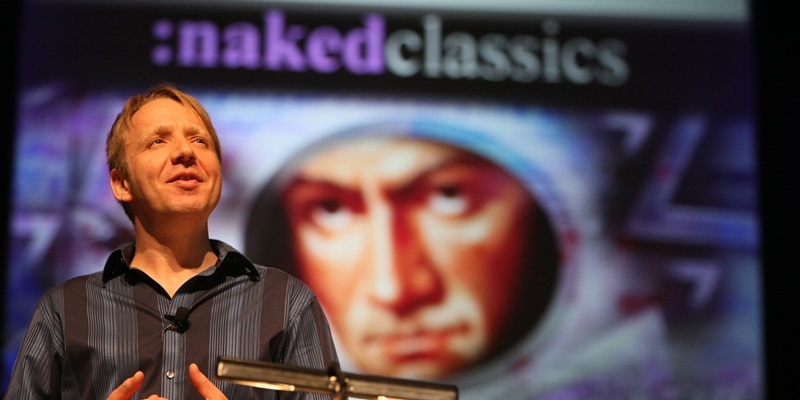The RSNO is back at the Caird Hall on Thursday, with something just a little bit different.
Naked Classics takes to the stage for the first time outside the central belt this week in a performance supported by The Courier and audiences can prepare to be surprised and delighted by its exploration of Haydn’s wonderful London Symphony No 104.
The ‘naked’ bit comes in the form of “all is revealed” about the composer, his life and times, the music, the instruments and the players. In the first half, presenter Paul Rissman takes the audience through the story of the music, the hows, why and wherefores, using images, conversation and musical interludes to bring the piece alive. In the second half, the orchestra plays the full work in all its glory.
It’s not unlike the approach of TV’s Naked Chef in fact, one German paper reckons that “Paul Rissmann is the Jamie Oliver of music animateurs”!
Rissmann is renowned as the creator of a series of highly successful classical works for children and, out of that, grew this fresh approach to some of the orchestral greats.
He explained, “We found that, in the reviews for the kids’ concerts we had done, people were asking, ‘Why only for children? Why don’t you do this for adults, too?’ And we thought, ‘Yeah, why not?’ So we introduced this guided music experience for our adult audiences, whether they were regulars or new attendees.
“When we first started Naked Classics, we had no idea who would come. I was never so scared in my life walking out on stage for the first time but it’s grown amazingly and I love it. I’ve been ‘Paul the person who presents concerts for kids’ for a long time and I didn’t know if I could do it but it’s just the greatest job.
“We now get 1500 people coming out on a Saturday night to hear us pull apart magnificent classical pieces instead of sitting at home watching Ant & Dec! It’s now the fifth season of Naked Classics and it’s great that, at long last, we’re coming north. It’s the first time in Dundee but it will be the first of many, I know.”
He added, “The idea isn’t to patronise people or over-simplify or dumb down. It’s to give the audience a real picture and taste of the music and its background, how and why it was created, why the composer wrote it that way and what the musicians they will hear live, playing this stuff, actually think about it. Musicians speak as well as play and audiences really like to see them as human beings rather than as just one part of a big band of players. It brings greater clarity and humanity to the performance.”
Alongside the might and majesty of live performance and the inimitable effect of a full orchestra at its best, Naked Classics also uses modern technology to highlight the sounds on stage.
“Technology has come a long way. In the past, we had something like 10 35mm slides and now, in Naked Classics, we can have 200 images projected in a performance. I was in the Salvador Dali Gallery in St Petersburg, Florida, recently, wandering around on my own. Then I bumped into the official guided tour and thought, ‘I’ll have a bit of a listen, see what I can pick up’. And it was brilliant because it homed in on things I might never have spotted myself. You can see a picture a million times but then someone points out one aspect or element in it that you hadn’t seen and makes it different and memorable for you.
“Back projections and images can really help to bring it alive physically seeing part of the score or a graphic representation fires the imagination. Even if you don’t read music, actually seeing the score and how it’s written can tell you a lot about shape and pattern in the sounds you’re hearing.
“People really enjoy seeing what music looks like as they listen to what it sounds like. It’s a way to give the audience a map that’s with them for the second half of the show, when they hear what it’s all about.”
Naked Classics with the RSNO takes place at the Caird Hall on Thursday, May 19, at 7.30pm. Tickets are £12.50, with concessions available, from the City Box Office on 01382 434940.
Photo Tom Finnie.
